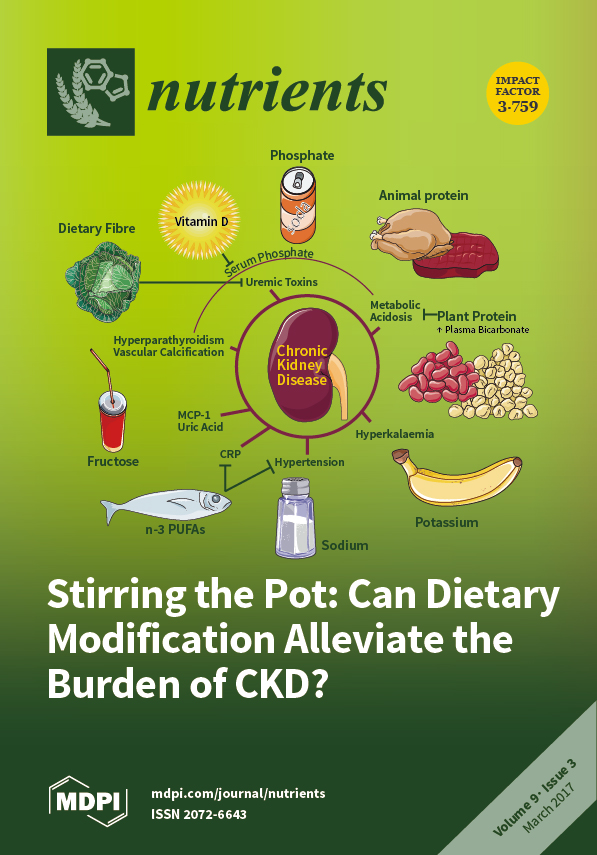Many studies compared the serum/plasma 1,25 dihydroxyvitamin D
3 (1,25(OH)
2D) and 25 hydroxyvitamin D
3 (25(OH)D) between people with and without nephrolithiasis, and their results were conflicting. After systematically searching PubMed, Web of Science, The Cochrane Library, CNKI, and the Wanfang
[...] Read more.
Many studies compared the serum/plasma 1,25 dihydroxyvitamin D
3 (1,25(OH)
2D) and 25 hydroxyvitamin D
3 (25(OH)D) between people with and without nephrolithiasis, and their results were conflicting. After systematically searching PubMed, Web of Science, The Cochrane Library, CNKI, and the Wanfang Database, we conducted a meta-analysis. Thirty-two observational studies involving 23,228 participants were included. Meta-analysis of these studies showed that of stone formers (SFs), calcium SFs had significantly higher concentrations of 1,25(OH)
2D (weighted mean difference (WMD), 10.19 pg/mL; 95% confidence interval (CI), 4.31–16.07;
p = 0.0007 and WMD, 11.28 pg/mL; 95% CI, 4.07–18.50;
p = 0.002, respectively) than non-stone formers, while the levels of 25(OH)D (WMD, 0.88 ng/mL; 95% CI, −1.04–2.80;
p = 0.37 and WMD, −0.63 ng/mL; 95% CI, −2.72–1.47;
p = 0.56, respectively) are similar. Compared with controls and normocalciuria SFs, hypercalciuria SFs had increased circulating 1,25(OH)
2D (WMD, 9.41 pg/mL; 95% CI, 0.15–18.67;
p = 0.05 and WMD, 2.75 pg/mL; 95% CI, −0.20–5.69;
p = 0.07, respectively) and markedly higher 25(OH)D (WMD, 5.02 ng/mL; 95% CI, 0.99–9.06;
p = 0.01 and WMD, 5.02 ng/mL; 95% CI, 2.14–7.90;
p = 0.0006, respectively). Normocalciuria SFs had elevated 1,25(OH)
2D level (WMD, 6.85 pg/mL; 95% CI, −5.00–18.71;
p = 0.26) and comparable 25(OH)D (WMD, 0.94 ng/mL; 95% CI, −3.55–5.43;
p = 0.68). Sensitivity analysis generated similar results. Current evidence suggests that increased circulating 1,25(OH)
2D is associated with urinary stones and a higher level of circulating 25(OH)D is significantly associated with hypercalciuria urolithiasis. Further studies are still needed to reconfirm and clarify the role of vitamin D in the pathogenesis of stones.
Full article






